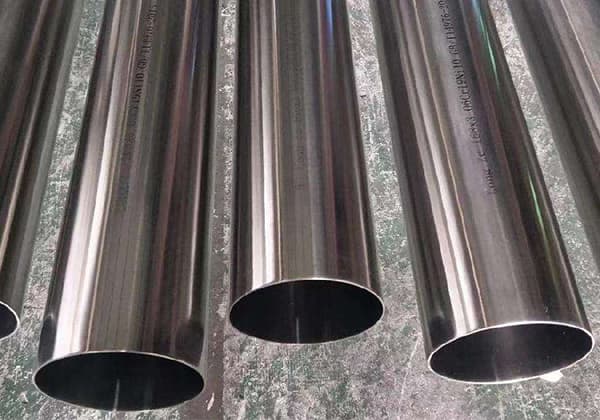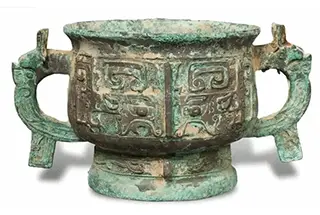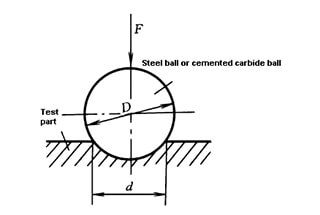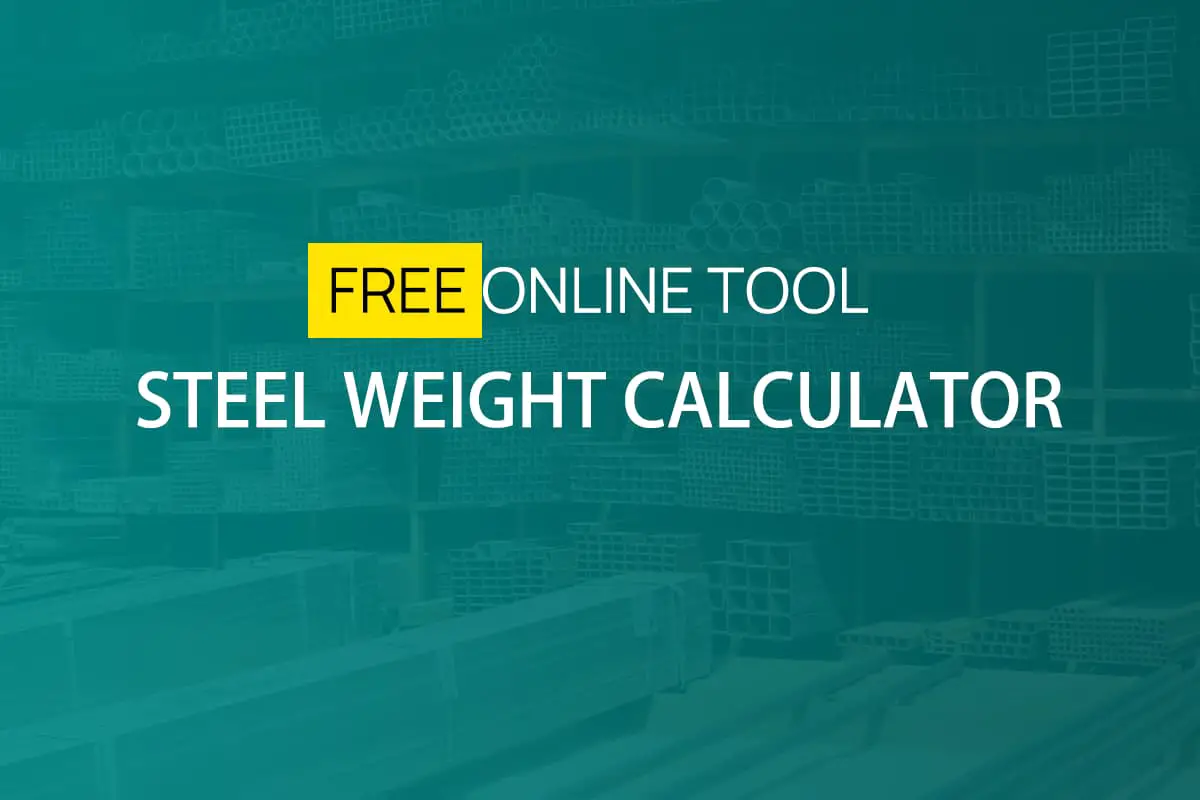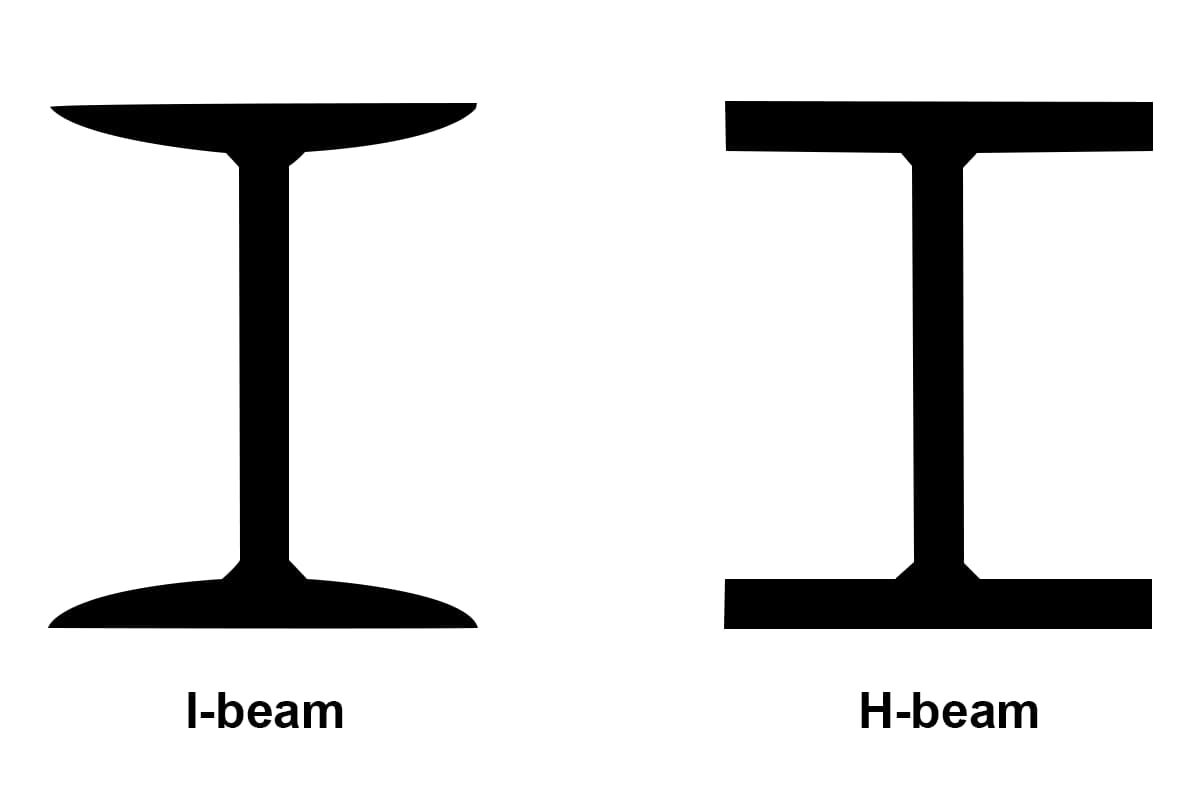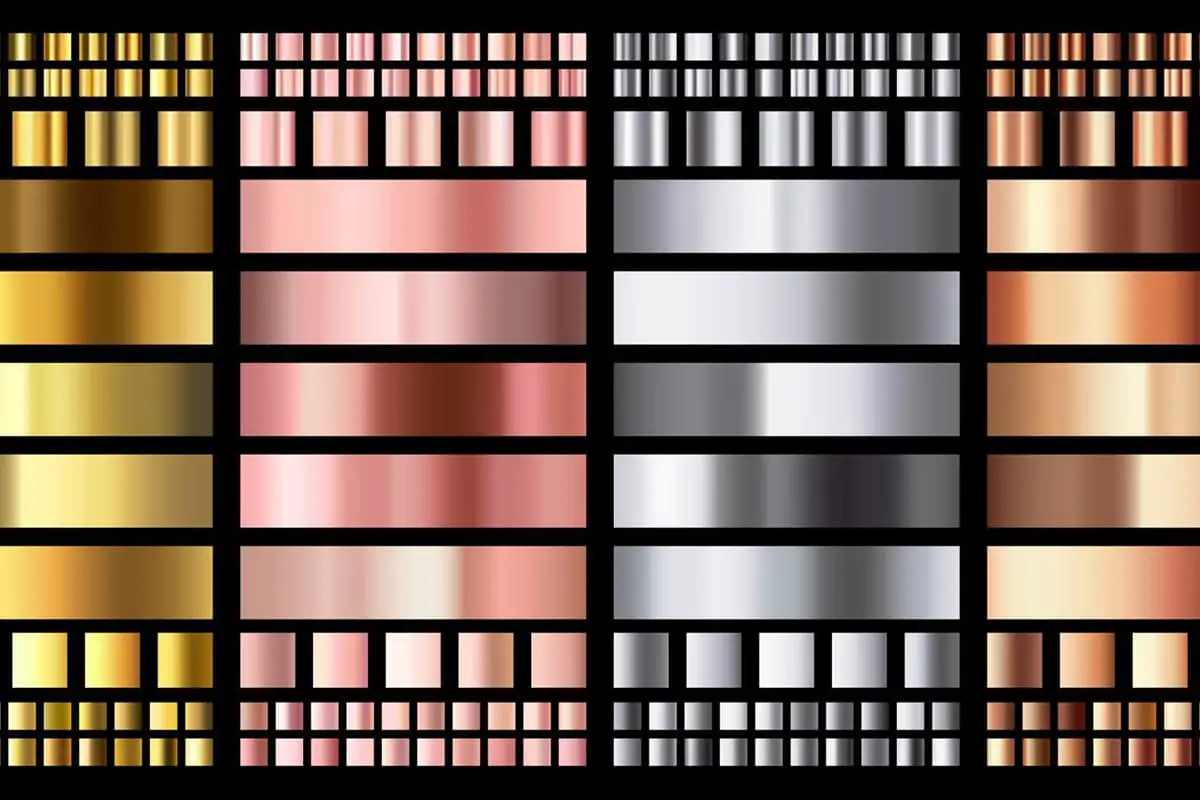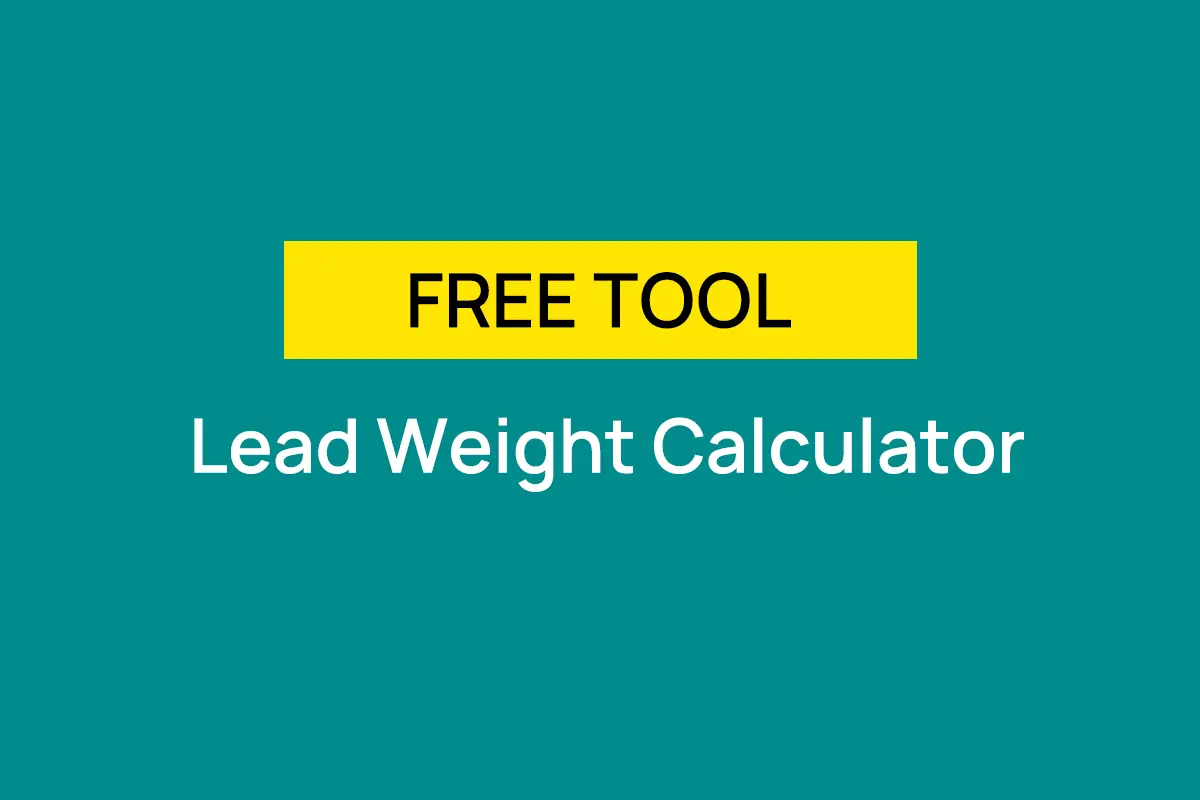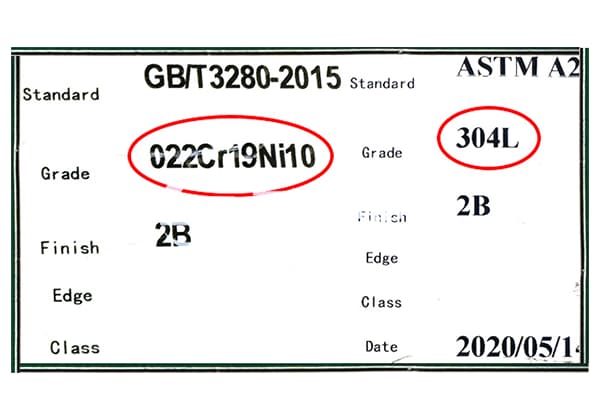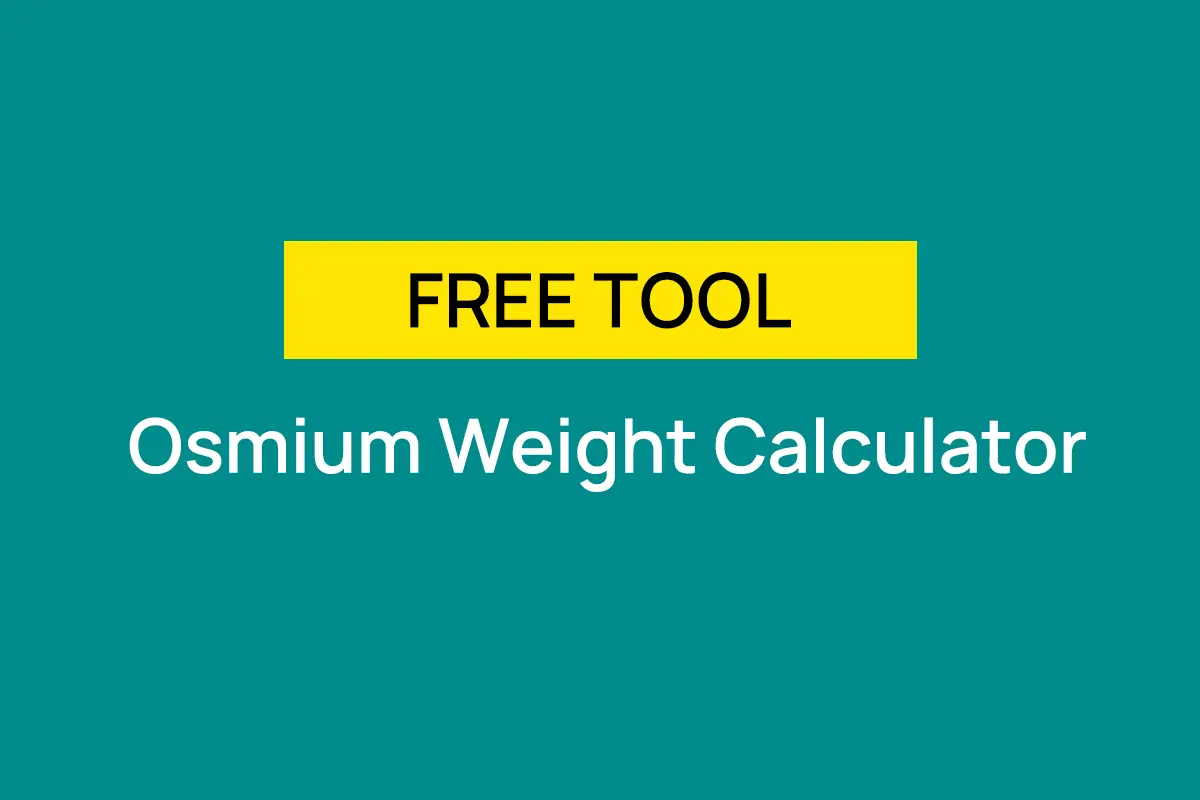
현대 건축의 효율성과 내구성을 높이는 비결이 무엇인지 궁금한 적이 있나요? 이 글에서는 건축에 혁신을 가져온 필수 건축 자재인 C형강과 Z형강 도리의 매혹적인 세계를 살펴봅니다. 고유한 특성과 용도로 다음 프로젝트를 어떻게 향상시킬 수 있는지 알아보세요!
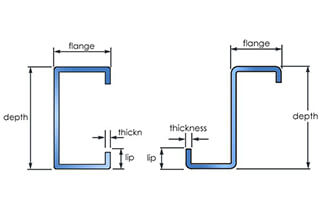
관련 건설 프로젝트의 건설 현장에 관한 한, 현재 모든 사람이 알아야 할 것은 현재 건설 시장에서 건축 자재 사용에 관한 것입니다.
가장 널리 사용되는 두 가지 건축 자재는 실제로 Z형강 도리와 C형강 도리라는 것은 의심의 여지가 없습니다.
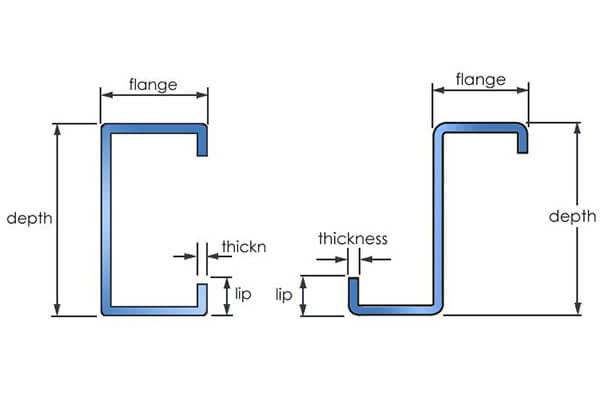
최근 Z형강과 형강 두 종류의 건축 자재가 개발되어 사용되고 있으며, Z형강과 형강은 저탄소 및 내구성으로 인해 도입 직후부터 건설 산업에서 널리 사용되고 있습니다.
현재 관련된 건설 산업 분야에는 특정 건설 공정에서 철강 사용에 대한 매우 방대한 양의 데이터가 있습니다.
또한 현재의 Z 형강 도리와 C 형강 도리는 어떤 의미에서 더 전통적인 건축 자재의 지위를 크게 대체했기 때문에 실제로 이것은 어느 정도 많은 수의 Z 형강과 C 형강을 만들었습니다.
| 측면 | C-섹션 강철 도리 | Z-섹션 스틸 도리 |
|---|---|---|
| 포함 각도 | 90도 | 60-75도 |
| 기계적 특성 | 다양한 강축 및 약축 속성 | 보다 균형 잡힌 기계적 특성 |
| 강철 프레임에 연결 | 일반적으로 나사 연결, 단순 지지대로 간주 | 더 나은 스트레스 분배로 인해 종종 선호됩니다. |
| 지붕 경사도에 따른 선호 사용량 | 벽 도리 및 저경사 지붕에 선호됨 | 경사가 큰 지붕에 선호됨 |
| 지붕 경사면의 단면 계수 | Z-펄린에 비해 약간 낮습니다. | 큰 경사면에서는 대칭으로 증가합니다. |
| 벽을 위한 선택 | Z-펄린과 비교 | C-펄린과 비교 |
| 연속 구조 멤버 | 중복에 적합하지 않음 | 중첩이 용이하여 더 적합 |
| 전체 사용량 | 다양한 애플리케이션에서 폭넓게 사용 | 특정 상황에서 선호되는 장점 |
C 섹션 강철 도리와 Z 섹션 강철 도리의 본질적인 차이점을 이해하려면 C / Z 섹션 강철 도리에 대한 해당 이해가 필요합니다.
다음으로 C 섹션 강철 도리와 Z 섹션 강철 도리에 대해 각각 설명한 다음 사용에 대한 이해에 따라 본질적인 차이점을 분석합니다.
C자형 강철 도리와 Z자형 강철 도리 사이의 각도가 다릅니다.
C자형 강철 도리의 포함 각도는 90도이며, Z자형 강철 도리의 포함 각도는 90도 미만인 약 60~75도입니다.
따라서 포함된 도리 각도를 선택 시 고려하고 해당 응력 지식과 결합해야 합니다.
Z 도리와 비교하여 C 도리의 강축과 약축의 기계적 특성은 매우 다릅니다.
C 섹션 강철과 강철 프레임 사이의 연결은 일반적으로 계산에서 단순한 지지대로 간주되어야하는 나사 연결을 채택하므로 후자가 응력, 계산 결과 및 구조에서 더 합리적입니다.
따라서 문 및 창 개구부와 같은 기타 특수 가공 요구 사항 외에도 Z 형강 섹션이 선호되며 벽 도리 및 경사가 작은 집 도리에는 C 형강이 선호됩니다;
경사가 큰 지붕 도리는 Z자형이어야 합니다.
어떤 환경에서 어떤 종류의 도리를 사용해야 할까요? 이는 적절한 건축 자재를 선택하는 데 매우 중요합니다.
1. 지붕 경사 고려 사항:
2. 벽면 애플리케이션:
벽 도리에는 Z자형과 C자형 도리를 선택할 수 있으며, 성능 차이는 거의 없습니다.
3. 연속적인 구조 멤버:
Z형 강철 도리는 중첩이 용이하여 설치가 간편하고 구조적 연속성이 향상되므로 연속 경간에는 권장됩니다.
퍼린 선택에 영향을 미치는 환경적 요인:
Z자형 도리는 특정 시나리오에서 특정 이점을 제공하지만, C자형 도리는 다용도성, 제조 용이성, 건축업자에게 친숙하기 때문에 여전히 널리 사용되고 있습니다. 선택은 종종 특정 프로젝트 요구 사항, 현지 건축법 및 디자인 선호도에 따라 달라집니다.
결론적으로, C형강과 Z형강의 주요 차이점을 이해하면 구조 설계 시 정보에 입각한 의사결정을 내릴 수 있습니다. 도리 시스템을 선택하고 구현할 때는 항상 구조 엔지니어와 상의하고 현지 건축 규정을 준수하세요.
C-섹션 강재는 자동으로 가공 및 성형됩니다. 강철 성형 기계.
기계는 주어진 크기에 따라 자동으로 성형 프로세스를 완료할 수 있습니다.
C 형강은 얇은 벽, 경량, 우수한 단면 성능 및 고강도를 갖춘 열간 코일 냉간 절곡으로 가공됩니다.
기존 채널 강재와 비교했을 때 동일한 강도로 30%의 재료를 절약할 수 있습니다.
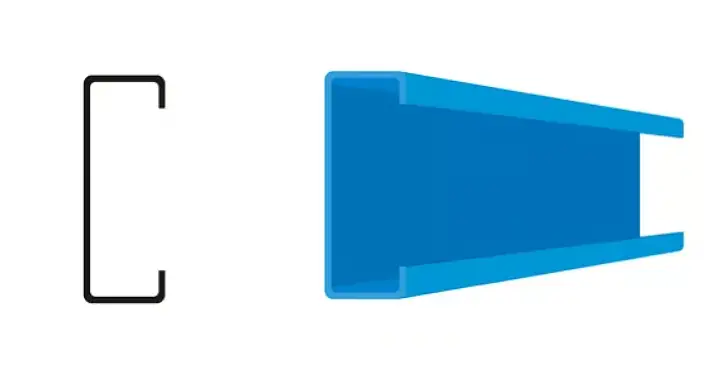
C-채널 또는 C-프로파일이라고도 하는 C형강은 철골 건물 건설에 널리 사용되는 다용도 구조 요소입니다. 주요 적용 분야로는 도리 및 벽체 거트 등이 있으며, 뛰어난 하중 지지력과 설치 용이성을 제공합니다. C자형 단면은 중량 대비 강도가 높아 경량 지붕 트러스, 브래킷 및 기타 다양한 건물 구성 요소에 이상적입니다.
철골 구조 설계에서 C형강 단면 프로파일을 효율적으로 결합하여 구조 성능이 향상된 복합 부재를 만들 수 있습니다. 예를 들어, 연속된 C형강 단면은 하중 전달 능력과 비틀림 강성이 향상된 박스 빔을 형성할 수 있습니다. 이러한 적응성 덕분에 건축가와 엔지니어는 특정 설계 요구 사항을 충족하면서 재료 사용을 최적화할 수 있습니다.
C형강은 건설 분야 외에도 기계 및 경공업 제조 분야에서 광범위하게 사용됩니다. 컨베이어 시스템용 지지 기둥, 기계 프레임, 장비 장착용 캔틸레버 암 등 다양한 용도로 사용됩니다. 프로파일 고유의 강성과 제작 용이성 덕분에 다양한 산업 구조물 및 고정 장치에 비용 효율적인 솔루션이 될 수 있습니다.
또한 표준화된 치수와 폭넓은 가용성의 C형강은 모듈식 설계 방식을 용이하게 하여 건설 및 산업 환경에서 신속한 조립과 향후 잠재적인 수정이 가능합니다.
배출 ① - 수평 맞추기 ② - 성형 ③ - 세팅 ④ - 교정 ⑤ - 길이 측정 ⑥ - 타이바 원형 구멍 펀칭 ⑦ - 타원형 연결 구멍 펀칭 ⑧ - 성형 및 절단 ⑨.
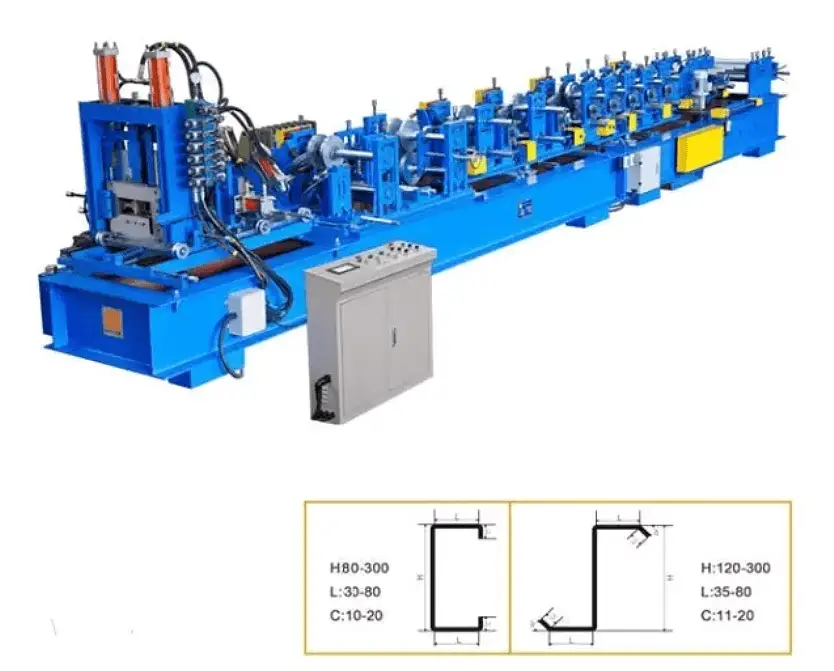
C자형 강철 도리는 5가지 사양으로 나뉩니다: 높이에 따라 80, 100, 120, 140, 160입니다.
길이는 엔지니어링 설계에 따라 결정될 수 있지만 운송 및 설치 등의 조건을 고려하여 일반적으로 총 길이는 12m를 넘지 않습니다.
각 줄의 숫자의 의미(예를 들어 C80×40×20×2.5):
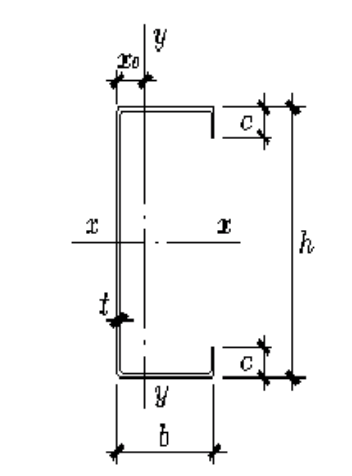
| 모델 | 크기 (mm) | 단면적 (cm²) | 무게 (kg/m) | |||
|---|---|---|---|---|---|---|
| h | b | c | t | |||
| C80 | 80 | 40 | 20 | 2.25 | 4.29 | 3.37 |
| C80 | 80 | 40 | 20 | 2.50 | 4.75 | 3.72 |
| C80 | 80 | 40 | 20 | 2.75 | 5.19 | 4.08 |
| C80 | 80 | 40 | 20 | 3.00 | 5.64 | 4.42 |
| C80 | 80 | 50 | 20 | 2.25 | 4.74 | 3.72 |
| C80 | 80 | 50 | 20 | 2.50 | 5.25 | 4.12 |
| C80 | 80 | 50 | 20 | 2.75 | 5.74 | 4.51 |
| C80 | 80 | 50 | 20 | 3.00 | 6.24 | 4.89 |
| C100 | 100 | 50 | 20 | 2.25 | 5.19 | 4.08 |
| C100 | 100 | 50 | 20 | 2.50 | 5.75 | 4.51 |
| C100 | 100 | 50 | 20 | 2.75 | 6.29 | 4.94 |
| C100 | 100 | 50 | 20 | 3.00 | 6.84 | 5.36 |
| C120 | 120 | 50 | 20 | 2.25 | 5.64 | 4.43 |
| C120 | 120 | 50 | 20 | 2.50 | 6.25 | 4.90 |
| C120 | 120 | 50 | 20 | 2.75 | 6.84 | 5.37 |
| C120 | 120 | 50 | 20 | 3.00 | 7.44 | 5.84 |
| C140 | 140 | 50 | 20 | 2.25 | 6.09 | 4.78 |
| C140 | 140 | 50 | 20 | 2.50 | 6.75 | 5.29 |
| C140 | 140 | 50 | 20 | 2.75 | 7.39 | 5.80 |
| C140 | 140 | 50 | 20 | 3.00 | 8.03 | 6.31 |
| C140 | 140 | 60 | 20 | 2.25 | 6.54 | 5.13 |
| C140 | 140 | 60 | 20 | 2.50 | 7.25 | 5.69 |
| C140 | 140 | 60 | 20 | 2.75 | 7.94 | 6.23 |
| C140 | 140 | 60 | 20 | 3.00 | 8.64 | 6.78 |
| C160 | 160 | 50 | 20 | 2.25 | 6.54 | 5.13 |
| C160 | 160 | 50 | 20 | 2.50 | 7.25 | 5.69 |
| C160 | 160 | 50 | 20 | 2.75 | 7.94 | 6.23 |
| C160 | 160 | 50 | 20 | 3.00 | 8.64 | 6.78 |
| C160 | 160 | 60 | 20 | 2.25 | 6.99 | 5.49 |
| C160 | 160 | 60 | 20 | 2.50 | 7.75 | 6.08 |
| C160 | 160 | 60 | 20 | 2.75 | 8.49 | 6.67 |
| C160 | 160 | 60 | 20 | 3.00 | 9.24 | 7.25 |
| C160 | 160 | 70 | 20 | 2.25 | 7.44 | 5.84 |
| C160 | 160 | 70 | 20 | 2.50 | 8.25 | 6.47 |
| C160 | 160 | 70 | 20 | 2.75 | 9.04 | 7.10 |
| C160 | 160 | 70 | 20 | 3.00 | 9.84 | 7.72 |
| C180 | 180 | 50 | 20 | 2.25 | 6.99 | 5.49 |
| C180 | 180 | 50 | 20 | 2.50 | 7.75 | 6.08 |
| C180 | 180 | 50 | 20 | 2.75 | 8.49 | 6.67 |
| C180 | 180 | 50 | 20 | 3.00 | 9.24 | 7.25 |
| C180 | 180 | 60 | 20 | 2.25 | 7.44 | 5.84 |
| C180 | 180 | 60 | 20 | 2.50 | 8.25 | 6.47 |
| C180 | 180 | 60 | 20 | 2.75 | 9.04 | 7.10 |
| C180 | 180 | 60 | 20 | 3.00 | 9.84 | 7.72 |
| C180 | 180 | 70 | 20 | 2.25 | 7.89 | 6.19 |
| C180 | 180 | 70 | 20 | 2.50 | 8.75 | 6.86 |
| C180 | 180 | 70 | 20 | 2.75 | 9.59 | 7.53 |
| C180 | 180 | 70 | 20 | 3.00 | 10.44 | 8.19 |
| C180 | 180 | 80 | 20 | 2.25 | 8.34 | 6.55 |
| C180 | 180 | 80 | 20 | 2.50 | 9.25 | 7.26 |
| C180 | 180 | 80 | 20 | 2.75 | 10.14 | 7.96 |
| C180 | 180 | 80 | 20 | 3.00 | 11.04 | 8.66 |
| C200 | 200 | 50 | 20 | 2.25 | 7.44 | 5.84 |
| C200 | 200 | 50 | 20 | 2.50 | 8.25 | 6.47 |
| C200 | 200 | 50 | 20 | 2.75 | 9.04 | 7.10 |
| C200 | 200 | 50 | 20 | 3.00 | 9.84 | 7.72 |
| C200 | 200 | 60 | 20 | 2.25 | 7.89 | 6.19 |
| C200 | 200 | 60 | 20 | 2.50 | 8.75 | 6.86 |
| C200 | 200 | 60 | 20 | 2.75 | 9.59 | 7.53 |
| C200 | 200 | 60 | 20 | 3.00 | 10.44 | 8.19 |
| C200 | 200 | 70 | 20 | 2.25 | 8.34 | 6.55 |
| C200 | 200 | 70 | 20 | 2.50 | 9.25 | 7.26 |
| C200 | 200 | 70 | 20 | 2.75 | 10.14 | 7.96 |
| C200 | 200 | 70 | 20 | 3.00 | 11.04 | 8.66 |
| C200 | 200 | 80 | 20 | 2.25 | 8.79 | 6.90 |
| C200 | 200 | 80 | 20 | 2.50 | 9.75 | 7.65 |
| C200 | 200 | 80 | 20 | 2.75 | 10.69 | 8.39 |
| C200 | 200 | 80 | 20 | 3.00 | 11.64 | 9.13 |
| C220 | 220 | 50 | 20 | 2.25 | 7.89 | 6.19 |
| C220 | 220 | 50 | 20 | 2.50 | 8.75 | 6.86 |
| C220 | 220 | 50 | 20 | 2.75 | 9.59 | 7.53 |
| C220 | 220 | 50 | 20 | 3.00 | 10.44 | 8.19 |
| C220 | 220 | 60 | 20 | 2.25 | 8.34 | 6.55 |
| C220 | 220 | 60 | 20 | 2.50 | 9.25 | 7.26 |
| C220 | 220 | 60 | 20 | 2.75 | 10.14 | 7.96 |
| C220 | 220 | 60 | 20 | 3.00 | 11.04 | 8.66 |
| C220 | 220 | 70 | 20 | 2.25 | 8.79 | 6.90 |
| C220 | 220 | 70 | 20 | 2.50 | 9.75 | 7.65 |
| C220 | 220 | 70 | 20 | 2.75 | 10.69 | 8.39 |
| C220 | 220 | 70 | 20 | 3.00 | 11.67 | 9.13 |
| C220 | 220 | 80 | 20 | 2.25 | 9.24 | 7.25 |
| C220 | 220 | 80 | 20 | 2.50 | 10.25 | 8.04 |
| C220 | 220 | 80 | 20 | 2.75 | 11.24 | 8.82 |
| C220 | 220 | 80 | 20 | 3.00 | 12.24 | 9.60 |
| C240 | 240 | 50 | 20 | 2.25 | 8.34 | 6.55 |
| C240 | 240 | 50 | 20 | 2.50 | 9.25 | 7.26 |
| C240 | 240 | 50 | 20 | 2.75 | 10.14 | 7.96 |
| C240 | 240 | 50 | 20 | 3.00 | 11.04 | 8.66 |
| C240 | 240 | 60 | 20 | 2.25 | 8.79 | 6.90 |
| C240 | 240 | 60 | 20 | 2.50 | 9.75 | 7.65 |
| C240 | 240 | 60 | 20 | 2.75 | 10.69 | 8.39 |
| C240 | 240 | 60 | 20 | 3.00 | 11.64 | 9.13 |
| C240 | 240 | 70 | 20 | 2.25 | 9.24 | 7.25 |
| C240 | 240 | 70 | 20 | 2.50 | 10.25 | 8.04 |
| C240 | 240 | 70 | 20 | 2.75 | 11.24 | 8.82 |
| C240 | 240 | 70 | 20 | 3.00 | 12.24 | 9.60 |
| C240 | 240 | 80 | 20 | 2.25 | 9.69 | 7.61 |
| C240 | 240 | 80 | 20 | 2.50 | 10.75 | 8.43 |
| C240 | 240 | 80 | 20 | 2.75 | 11.79 | 9.26 |
| C240 | 240 | 80 | 20 | 3.00 | 12.84 | 10.07 |
| C250 | 250 | 50 | 20 | 2.25 | 8.57 | 6.72 |
| C250 | 250 | 50 | 20 | 2.50 | 9.50 | 7.45 |
| C250 | 250 | 50 | 20 | 2.75 | 10.42 | 8.18 |
| C250 | 250 | 50 | 20 | 3.00 | 11.34 | 8.90 |
| C250 | 250 | 60 | 20 | 2.25 | 9.02 | 7.08 |
| C250 | 250 | 60 | 20 | 2.50 | 10.00 | 7.85 |
| C250 | 250 | 60 | 20 | 2.75 | 10.97 | 8.61 |
| C250 | 250 | 60 | 20 | 3.00 | 11.94 | 9.37 |
| C250 | 250 | 70 | 20 | 2.25 | 9.47 | 7.43 |
| C250 | 250 | 70 | 20 | 2.50 | 10.50 | 8.24 |
| C250 | 250 | 70 | 20 | 2.75 | 11.52 | 9.04 |
| C250 | 250 | 70 | 20 | 3.00 | 12.54 | 9.84 |
| C250 | 250 | 75 | 20 | 2.25 | 9.69 | 7.61 |
| C250 | 250 | 75 | 20 | 2.50 | 10.75 | 8.43 |
| C250 | 250 | 75 | 20 | 2.75 | 11.79 | 9.26 |
| C250 | 250 | 75 | 20 | 3.00 | 12.84 | 10.07 |
| C250 | 250 | 80 | 20 | 2.25 | 9.92 | 7.78 |
| C250 | 250 | 80 | 20 | 2.50 | 11.00 | 8.63 |
| C250 | 250 | 80 | 20 | 2.75 | 12.07 | 9.47 |
| C250 | 250 | 80 | 20 | 3.00 | 13.14 | 10.31 |
Z형강은 널리 사용되는 냉간 성형된 얇은 벽 구조용 부재로, 독특한 Z자형 단면이 특징입니다. 일반적으로 1.6mm ~ 3.0mm의 두께와 120mm ~ 350mm의 단면 높이로 제조되는 Z형강은 다양한 구조 용도에 적합한 우수한 중량 대비 강도를 제공합니다.
Z 도리 생산에 사용되는 주요 재료는 열간 압연강(부식 방지를 위해 도장할 수 있음)과 아연도금강입니다. 후자는 내식성이 뛰어나 노출되거나 습도가 높은 환경에 특히 적합합니다.
중국의 Z형 도리의 제조 공정 및 품질 표준은 냉간 성형된 얇은 벽 철골 구조물에 대한 요구 사항을 설명하는 GB50018-2002 사양을 준수합니다. 이 표준은 여러 제조업체에 걸쳐 일관된 품질, 치수 정확도 및 구조적 무결성을 보장합니다.
Z형강은 산업용 창고, 상업용 건물, 농업용 구조물 등 대규모 철골 구조물 시설에 광범위하게 사용됩니다. 효율적인 하중 전달과 손쉬운 설치가 가능한 설계로 시공 시간과 비용을 절감할 수 있습니다.
특정 프로젝트 요구 사항에 맞게 길이와 구멍 패턴을 맞춤 제작하는 Z 도리 맞춤 제작이 일반적입니다. 고급 CNC 기계는 정밀한 절단, 펀칭 및 성형 작업을 가능하게 하여 각 도리가 의도한 용도에서 최적의 성능을 발휘할 수 있도록 정확한 사양을 충족합니다.
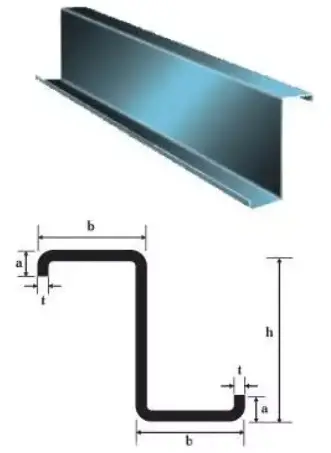
냉간 성형 Z형강 프로파일은 맞춤형 사양, 다양한 크기 옵션, 탁월한 중량 대비 압축 강도 비율 등 상당한 이점을 제공합니다. 이러한 특성 덕분에 Z형 도리는 다양한 산업 및 건설 분야에 적용할 수 있습니다.
Z 섹션 도리는 다음을 포함하여 다양한 분야에서 광범위하게 사용됩니다:
건설 및 인프라:
교통편:
에너지 및 유틸리티:
농업:
산업 및 상업용:
전문 애플리케이션:
Z-섹션 도리는 높은 중량 대비 강도 및 내식성(아연 도금 시)과 함께 다양한 산업 및 응용 분야에서 효율적이고 비용 효율적인 구조 솔루션을 찾는 엔지니어와 설계자에게 이상적인 선택입니다.
| 아니요 | 항목 | 모델 | 단위 | 무게 |
|---|---|---|---|---|
| 1 | 콜드 벤드 Z 섹션 스틸 | Z80×40×2.5 | kg/m | 2.947 |
| 2 | 콜드 벤드 Z 섹션 스틸 | Z80×40×3.0 | kg/m | 3.491 |
| 3 | 콜드 벤드 Z 섹션 스틸 | Z100×50×2.5 | kg/m | 3.732 |
| 4 | 콜드 벤드 Z 섹션 스틸 | Z100×50×3.0 | kg/m | 4.432 |
| 5 | 콜드 벤드 Z 펄린 스틸 | Z100×40×20×2.0 | kg/m | 3.208 |
| 6 | 콜드 벤드 Z 펄린 스틸 | Z100×40×20×2.5 | kg/m | 3.932 |
| 7 | 콜드 벤드 Z 펄린 스틸 | Z120×50×20×2.0 | kg/m | 3.835 |
| 8 | 콜드 벤드 Z 펄린 스틸 | Z120×50×20×2.5 | kg/m | 4.718 |
| 9 | 콜드 벤드 Z 펄린 스틸 | Z120×50×20×3.0 | kg/m | 5.569 |
| 10 | 콜드 벤드 Z 펄린 스틸 | Z140×50×20×2.5 | kg/m | 5.11 |
| 11 | 콜드 벤드 Z 펄린 스틸 | Z140×50×20×3.0 | kg/m | 6.04 |
| 12 | 콜드 벤드 Z 펄린 스틸 | Z160×60×20×2.5 | kg/m | 5.895 |
| 13 | 콜드 벤드 Z 펄린 스틸 | Z160×60×20×3.0 | kg/m | 6.982 |
| 14 | 콜드 벤드 Z 펄린 스틸 | Z160×70×20×2.5 | kg/m | 6.288 |
| 15 | 콜드 벤드 Z 펄린 스틸 | Z160×70×20×3.0 | kg/m | 7.453 |
| 16 | 콜드 벤드 Z 펄린 스틸 | Z180×70×20×2.5 | kg/m | 6.679 |
| 17 | 콜드 벤드 Z 펄린 스틸 | Z180×70×20×3.0 | kg/m | 7.924 |
| 18 | 콜드 벤드 Z 펄린 스틸 | Z200×70×20×2.5 | kg/m | 7.073 |
| 19 | 콜드 벤드 Z 펄린 스틸 | Z200×70×20×3.0 | kg/m | 8.394 |
| 20 | 콜드 벤드 Z 펄린 스틸 | Z230×75×25×3.0 | kg/m | 9.573 |
| 21 | 콜드 벤드 Z 펄린 스틸 | Z230×75×25×4.0 | kg/m | 12.51 |
| 22 | 콜드 벤드 Z 펄린 스틸 | Z250×75×25×3.0 | kg/m | 10.04 |
| 23 | 콜드 벤드 Z 펄린 스틸 | Z250×75×25×4.0 | kg/m | 13.14 |

